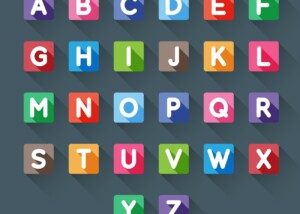Don’t assume a nonverbal or non-conversational autistic person can’t read or can’t learn to read. Parents need to take the bull by the horns.
A study, published in the journal Autism, indicates that autistic individuals may possess greater language and literacy skills than previously recognized.
The research, led by Professor Vikram Jaswal of the University of Virginia’s Psychology Department, challenges longstanding assumptions about the capabilities of nonspeaking autistic people.
Traditionally, the inability to speak has been equated with an inability to understand or use language effectively.
However, Jaswal’s study provides compelling evidence to the contrary, suggesting that many nonspeaking Autistics can understand written language and could potentially learn to express themselves through writing.
And typing. I have met an autistic man who can carry on conversations via a keyboard, typing out his thoughts on a screen, yet is not able to verbally converse.
He can speak short statements to express needs, but the part of the brain that enables back-and-forth verbal interaction does not work in this young man.
Ironically, he could read out loud fluently.
Thus, a “nonspeaking” or “nonverbal” autistic person isn’t necessarily mute and unable to form spoken words.
The terms nonverbal, nonspeaking and non-conversational do need to be used with more discretion.
Jaswal emphasizes the detrimental effects of underestimating the capabilities of nonspeaking autistic individuals by pointing out, in the paper, that assuming that the inability to understand automatically comes with being nonspeaking limits doors of opportunity.
The study’s findings suggest a significant underestimation of the literacy potential among these individuals, with five times more nonspeaking autistic teenagers and adults demonstrating knowledge of written language conventions than previous estimates have ever suggested.
Many parents of nonspeaking autistic kids never think to put a standard keyboard before them to see if they could type out answers to questions (albeit rudimentary “finger poking” style).
If parents wish to see if somewhere along the way, their autistic child has learned to read, they should NOT physically guide their finger or wrist over the keyboard or otherwise give any kind of prompts!
Rather, let the child, teen or adult do this entirely on their own; be patient; even many typical people who’ve never learned touch-typing are very awkward with finding the right keys.
How the Study Was Done
The innovative approach used in the study involved a method akin to the arcade game Whac-a-Mole.
Participants were asked to tap letters on a tablet as they lit up, with sequences that sometimes formed sentences heard earlier and other times random sequences.
The research team hypothesized that a literate person would predict and respond faster to the letters forming familiar sentences than to those in random sequences.
The results showed that over half of the 31 nonspeaking autistic participants responded in a manner consistent with literacy, reacting more quickly to sentences than to random sequences.
This finding is particularly striking because many participants had not received formal literacy instruction, yet they displayed an understanding of written language structures.
Jaswal suggests that these foundational literacy skills could be harnessed with appropriate instruction and support, offering nonspeaking autistic individuals new means of communication.
This could significantly impact their educational, employment and social opportunities, areas where they have historically faced substantial barriers.
The implications of this study are profound. Nonspeaking autistic individuals often encounter limited opportunities and support due to misconceptions about their abilities.
By recognizing their potential literacy skills, educators and caregivers can develop more effective communication strategies, enabling these individuals to express themselves and engage more fully with the world around them.
The young man whom I had mentioned earlier is deceivingly literate.
He isolates himself from others and likes to pace back and forth while vocally stimming, creating the illusion that he’s “low functioning” and doesn’t understand conversations around him.
I met him through a temporary part-time job working with autistic adults. One day I wanted to see if he could read, so I asked him to read information on a flyer about dogs.
And hot dang, he read the content as well as I could have, albeit a slight speech impediment that affected pronunciation.
Later, after we’d had lunch, I put paper and pen before him and said, “Write down three things you’d like to do.”
During lunch he had rocked and vocally stimmed between bites of food, seemingly unaware of any conversation around him between me and a few other people.
Yet not only did he legibly print out reasonable goals in three complete sentences, he read each word aloud as he wrote it. And there were no misspellings, either.
Unfortunately, his parents had discovered his potential for typing to communicate when he was in his late teens – an ability that should have, and could have, been harnessed years earlier.
To judge this man strictly by his disconnect with basic human interaction would be an injustice, and I myself even learned something that day!
The part of the brain that enables us to deliver back-and-forth conversation is NOT the same region that enables us to learn how to read and write, or understand what others are saying.
We must never underestimate what a nonverbal, nonspeaking or non-conversational Autist really knows!
Autistic Child Loves Water, Can’t Swim? Drowning Prevention Tactics
 Lorra Garrick has been covering medical and fitness topics for many years, having written thousands of articles for print magazines and websites, including as a ghostwriter. She’s also a former ACE-certified personal trainer. In 2022 she received a diagnosis of Level 1 Autism Spectrum Disorder.
Lorra Garrick has been covering medical and fitness topics for many years, having written thousands of articles for print magazines and websites, including as a ghostwriter. She’s also a former ACE-certified personal trainer. In 2022 she received a diagnosis of Level 1 Autism Spectrum Disorder.
.










































